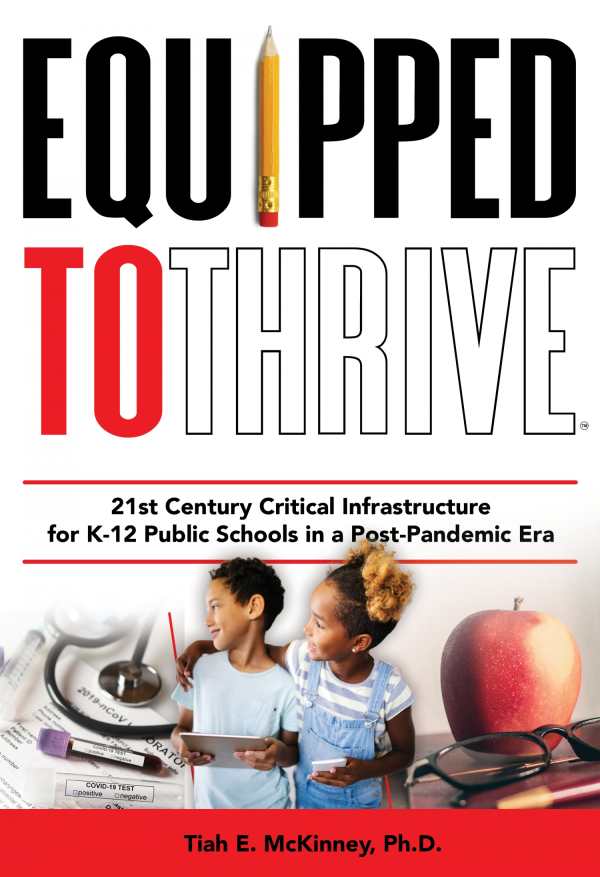
Equipped to Thrive
21st Century Critical Infrastructure for K-12 Public Schools in a Post-Pandemic Era
Equipped to Thrive is an enlightening how-to manual for healthcentric, student-first K–12 education in the post-COVID age.
Through passionate and convincing research, Tiah E. McKinney’s educator’s guide Equipped to Thrive establishes a link between student health and academic performance.
McKinney asserts that for the first time in half a century, most public school students come from low-income households. Further, the health and academic achievement gaps that emerged before COVID-19 were exacerbated by the pandemic. Yet most K–12 initiatives ignore the relationship between social determinants of health (SDH) and student learning outcomes. Her book seeks to fill this void, drawing on case study research into a joint effort between a public school and a nonprofit health system to establish a school-based health center. The results are explored and used to proffer advice to educators and policymakers, all based around one central truth: “Healthy kids really do learn better.”
The book does an apt job of showing how COVID-19 disrupted K–12 education and created a “new normal” where student health and academic achievement gaps were widened. Its mixed-methods approach, which combines the qualitative case study (including teacher and nurse testimonies) with quantitative research (such as statistics and tangible educational outcomes), is convincing. Its evidence includes pandemic-related unemployment rates, increased poverty rates, a sharp decline in national test scores, and a perceived increase in student misconduct and misbehavior.
The prose is confident and academic, and McKinney interprets her research findings in language that is both scholarly and readable. For example, in describing the key takeaways from her case study, McKinney writes:
The primary finding of this case study is that a majority of the student population attending the public school academy were from low-income households and had unmet health needs that led to poor health, which negatively impacted students’ ability to attend school or to remain in school for the entire day.
The chapters are likewise well organized, and they begin and end with signposts that summarize preceding discussions and signal what’s to come.
For much of the book, though, the specific interventions provided by the school-based health center are vague. There are references to “prevention, “education programs,” “health screenings,” and “health-promoting activities,” but the particulars are not defined until chapter four. Once shared, these interventions are intriguing and instructive, as with the school’s decision to offer larger servings of milk—and in a variety of flavors—to help students obtain more calcium. And the penultimate chapter includes concrete recommendations for improving student health, emphasizing fitness, nutrition, and well-being. These best practices include both words of wisdom (such as advice to feed students breakfast) and words of caution (such as to be wary of inexpensive, sugary, high-fat breakfast options).
While much of the advice applies to K–12 schools across the country, the case school’s school-based health center only became a reality through the generosity of a private donor: “It is important to note that not having this donor would have presented a huge financial obstacle for the case school.” As such, implementing the Equipped to Thrive model may not be an option for schools that are unable to secure proper funding.
Original and enlightening, Equipped to Thrive is a how-to manual for healthcentric, student-first K–12 education in the post-COVID age.
Reviewed by
Hannah Pearson
Disclosure: This article is not an endorsement, but a review. The publisher of this book provided free copies of the book and paid a small fee to have their book reviewed by a professional reviewer. Foreword Reviews and Clarion Reviews make no guarantee that the publisher will receive a positive review. Foreword Magazine, Inc. is disclosing this in accordance with the Federal Trade Commission’s 16 CFR, Part 255.
